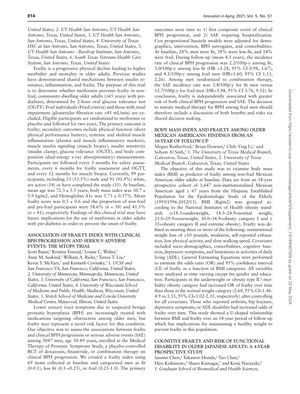Association of Frailty Index with Clinical Benign Prostatic Hyperplasia Progression and Serious Adverse Events: The MTOPS Trial
December 2021
in “
Innovation in aging
”

TLDR Frailer men have a higher risk of worsening prostate problems and serious health events needing hospital care.
In a study involving 3,047 men aged 50-89 years from the Medical Therapy of Prostatic Symptoms Study, researchers found that frailty is independently associated with a higher risk of clinical benign prostatic hyperplasia (BPH) progression and serious adverse events (SAE) requiring hospitalization. Participants were categorized based on a frailty index as fit, less fit, or frail. Over a mean follow-up of 4.5 years, the incidence rate of clinical BPH progression was 2.2 per 100 person-years (p-y) for fit men, 3.0 per 100 p-y for less fit men, and 4.1 per 100 p-y for frail men. Additionally, frail men randomized to combination therapy had a SAE incidence rate of 12.7 per 100 p-y compared to 3.4 per 100 p-y for fit men. The study suggests that treatment decisions for BPH in frail men should carefully weigh the benefits and risks.
